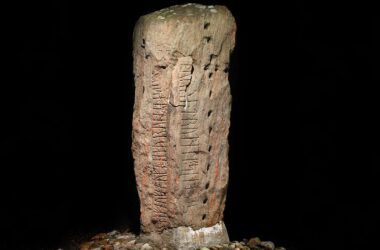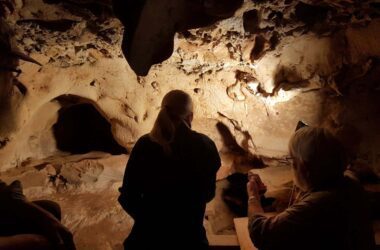A human bone from up to about 5900 years ago found inside the Cueva de los Marmoles cave in Granada, Spain
J.C. Vera Rodríguez, CC-BY 4.0
Southern Spain’s prehistoric farmers and herders buried their dead in a vast cave, but they may have exhumed them later to use the bones for tools and even for food.
Researchers, amateur archaeologists, and even tomb robbers have been making trips to the Cueva de los Marmoles cave in Granada ever since it was discovered in 1934.
People have previously discovered a human skull cup, a well-crafted tibia instrument, and dozens of other bone fragments within the 2500 square metre cave, which has housed numerous generations of humans throughout three millennia. Up to a year after their deaths, new evidence reveals that some skeletons were broken and scraped on purpose.
According to researcher Marco Milella of the University of Bern in Switzerland, the results suggest that individuals may have been manipulating the bones of the deceased after the cadavers had rotted slowly for some time in the cave’s chilly, damp atmosphere.
Along with improved carbon dating and state-of-the-art microscopic and scanning equipment, Milella, Rafael Martnez Sánchez, and their colleagues from the University of Córdoba, Spain, travelled to the cave to gather further items and analyse them.
They studied 411 bone pieces and 57 teeth discovered in different parts of the cave, as well as other specimens on loan from a museum. At least a dozen adults and children from ancient agrarian societies were identified from the remains. The results indicate that the cave was utilised as a cemetery three times: between 3900 and 3750 B.C., between 2600 and 2300 B.C., and between 1400 and 1200 B.C.
The research group also discovered that only 3% of the pieces had been damaged by animal teeth, while roughly 35% had been broken or sliced deliberately by humans. Researchers believe that these breaks, scrapes, and slices occurred in the “fresh” bones, up to a year after death.
However, there is no evidence that the bones were ever violently detached from the surrounding muscles and tendons. According to Millela, this indicates that the bones were still somewhat pliable despite the fact that the human remains had been partially decomposed. Thus, “this, in turn, points to action not performed shortly after the deaths of the individuals, but at least some months after death.”
A skull, perhaps from a middle-aged man, was scraped and fashioned into a bowl or cup using stone tools. Additionally, the shinbone of a teenager was shattered, polished, and shaped to create a spatula-like implement, perhaps used for scraping leather. The marrow had been scraped out of some lengthy bones, which Milella interprets as a cultural practise of “cleaning the remains” or as a possible food source.
He concludes that the lack of physical evidence of conflict rules out the possibility that the remains are the consequence of power struggles between distinct populations. His team intends to do DNA analysis in order to determine the ties between the people who were buried in the cave.
FAQs
Q1: What is the significance of the Cueva de los Marmoles cave in Spain?
A1: The cave is significant for its archaeological discoveries, including tools crafted from human bones, shedding light on ancient practices.
Q2: What artifacts have been found in the cave?
A2: Artifacts include a human skull cup, bone instruments, and various bone fragments, indicating the diverse use of human bones.
Q3: Why do researchers believe some skeletons were manipulated after death?
A3: Evidence suggests that bones were intentionally broken, scraped, or shaped, possibly months after death, revealing unique burial practices.
Q4: How old are the remains found in the cave?
A4: The remains date back to multiple periods between 3900 B.C. and 1200 B.C., representing ancient agrarian societies.
Q5: What were some of the bone artifacts used for?
A5: Bone artifacts include a skull turned into a cup, a shinbone crafted into a spatula, and marrow removal from long bones, possibly for cleaning or consumption.







